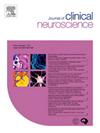ICU患者住院期间初始癫痫发作危险因素的识别:eICU合作研究数据库的回顾性分析
IF 1.9
4区 医学
Q3 CLINICAL NEUROLOGY
引用次数: 0
摘要
背景我们旨在利用各种机器学习算法识别 ICU 患者初始癫痫发作的风险因素。方法利用广泛的 eICU 数据库,我们整理了 200,859 份患者记录数据集,其中 15,890 名患者符合纳入和排除标准。其中,497 名患者在住院期间首次出现癫痫发作。我们使用逻辑回归(Logistic Regression)、随机森林(Random Forest)、梯度提升(Gradient Boosting)、支持向量机(SVM)、K-近邻(KNN)和决策树(Decision Tree)开发了模型,以识别与这些发作相关的风险因素。在开发和评估了这些单独的模型后,我们选择了两个表现最好的模型,并使用堆叠集合学习技术将它们组合在一起。此外,我们还使用了递归特征消除(RFE)来选择最相关的特征。使用接收者工作特征曲线下面积(AUC-ROC)、准确度、精确度、召回率和 F1 分数等指标,以及校准图和决策曲线分析(DCA)对模型性能进行评估。结果初始癫痫发作的发生率为 3.10%(497/15,890),训练集和验证集之间没有显著差异。表现最好的单个模型是梯度提升模型(AUC-ROC:0.78)和逻辑回归模型(AUC-ROC:0.79)。集合模型的 AUC-ROC 为 0.80(95%CI:0.78-0.82),准确度为 0.78,精确度为 0.80,召回率为 0.75,F1 得分为 0.77。校准图显示,集合模型的预测概率与观察结果非常吻合。结论通过堆叠技术将梯度提升和逻辑回归相结合的集合学习模型在识别 ICU 患者初始癫痫发作的风险因素方面表现出色。该模型采用了一系列性能指标进行评估,包括准确性、灵敏度、特异性和 AUC-ROC 曲线,并通过 10 倍交叉验证进行了验证,以确保其稳健性和普适性。这些结果提供了与临床相关的风险因素识别。识别出的主要风险因素包括年龄、GCS 评分、血糖水平、血细胞比容水平、低钠血症、中风病史、凝血酶原时间、血钾水平和高血压。风险估计表将这些复杂的相互作用简化为临床使用的实用工具。本文章由计算机程序翻译,如有差异,请以英文原文为准。
Initial seizure episodes risk factors identification during hospitalization of ICU patients: A retrospective analysis of the eICU collaborative research database
Background
We aimed to identify risk factors for initial seizure episodes in ICU patients using various machine learning algorithms.
Methods
Using the extensive eICU database, we curated a dataset of 200,859 patient records, with 15,890 patients meeting inclusion and exclusion criteria. Among them, 497 experienced initial seizure episodes during hospitalization. We developed models to identify risk factors associated with these episodes using Logistic Regression, Random Forest, Gradient Boosting, Support Vector Machine (SVM), K-Nearest Neighbors (KNN), and Decision Tree. After developing and evaluating these individual models, we selected the two best-performing models and combined them using a stacking ensemble learning technique. Additionally, Recursive Feature Elimination (RFE) was used to select the most relevant features. Model performance was evaluated using metrics such as Area Under the Receiver Operating Characteristic Curve (AUC-ROC), accuracy, precision, recall, and F1 score, alongside calibration plots and Decision Curve Analysis (DCA).
Results
The incidence rate of initial seizure episodes was 3.10% (497/15,890), with no significant difference between the training and validation sets. The best-performing individual models were Gradient Boosting (AUC-ROC: 0.78) and Logistic Regression (AUC-ROC: 0.79). The ensemble model achieved an AUC-ROC of 0.80 (95%CI: 0.78–0.82), accuracy of 0.78, precision of 0.80, recall of 0.75, and F1 score of 0.77. Calibration plots demonstrated that the ensemble model’s predicted probabilities were well-aligned with observed outcomes. DCA indicated significant net benefit across a range of threshold probabilities, underscoring the model’s clinical utility.
Conclusion
The ensemble learning model, combining Gradient Boosting and Logistic Regression via a stacking technique, demonstrated superior performance for identifying risk factors for initial seizure episodes in ICU patients. This model was evaluated using a range of performance metrics, including accuracy, sensitivity, specificity, and the AUC-ROC curve, and was validated through 10-fold cross-validation to ensure its robustness and generalizability. These results offer clinically relevant risk factor identification. Key risk factors identified include age, GCS score, glucose levels, hematocrit levels, hyponatremia, stroke history, prothrombin time, potassium levels, and hypertension. The risk estimation table simplifies these complex interactions into a practical tool for clinical use.
求助全文
通过发布文献求助,成功后即可免费获取论文全文。
去求助
来源期刊

Journal of Clinical Neuroscience
医学-临床神经学
CiteScore
4.50
自引率
0.00%
发文量
402
审稿时长
40 days
期刊介绍:
This International journal, Journal of Clinical Neuroscience, publishes articles on clinical neurosurgery and neurology and the related neurosciences such as neuro-pathology, neuro-radiology, neuro-ophthalmology and neuro-physiology.
The journal has a broad International perspective, and emphasises the advances occurring in Asia, the Pacific Rim region, Europe and North America. The Journal acts as a focus for publication of major clinical and laboratory research, as well as publishing solicited manuscripts on specific subjects from experts, case reports and other information of interest to clinicians working in the clinical neurosciences.
 求助内容:
求助内容: 应助结果提醒方式:
应助结果提醒方式:


